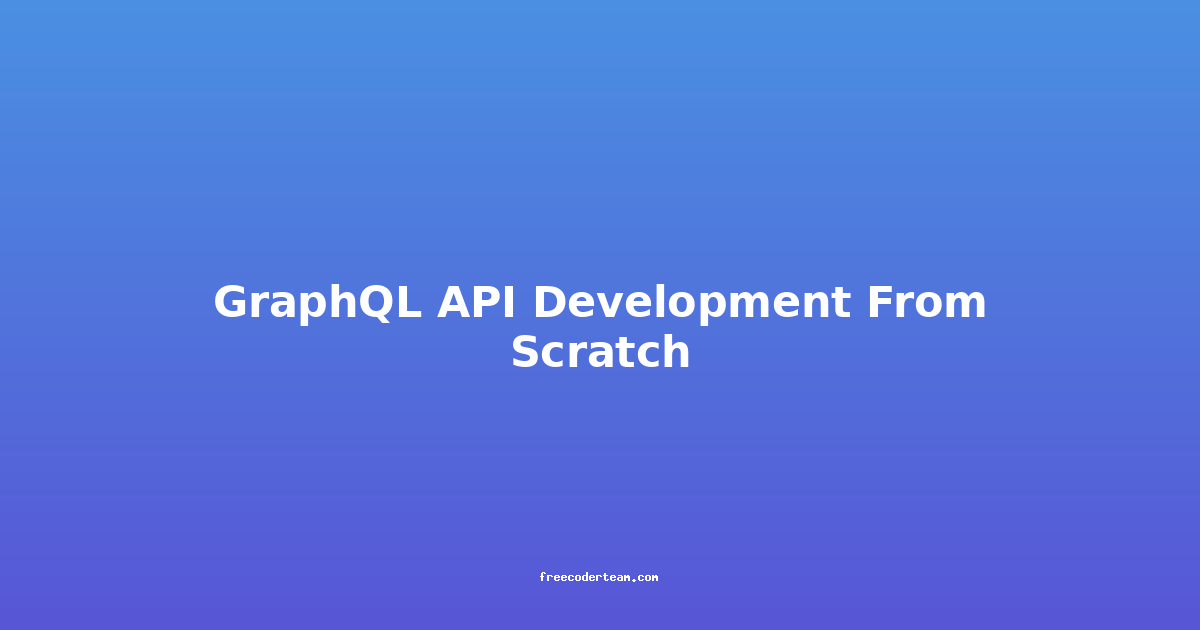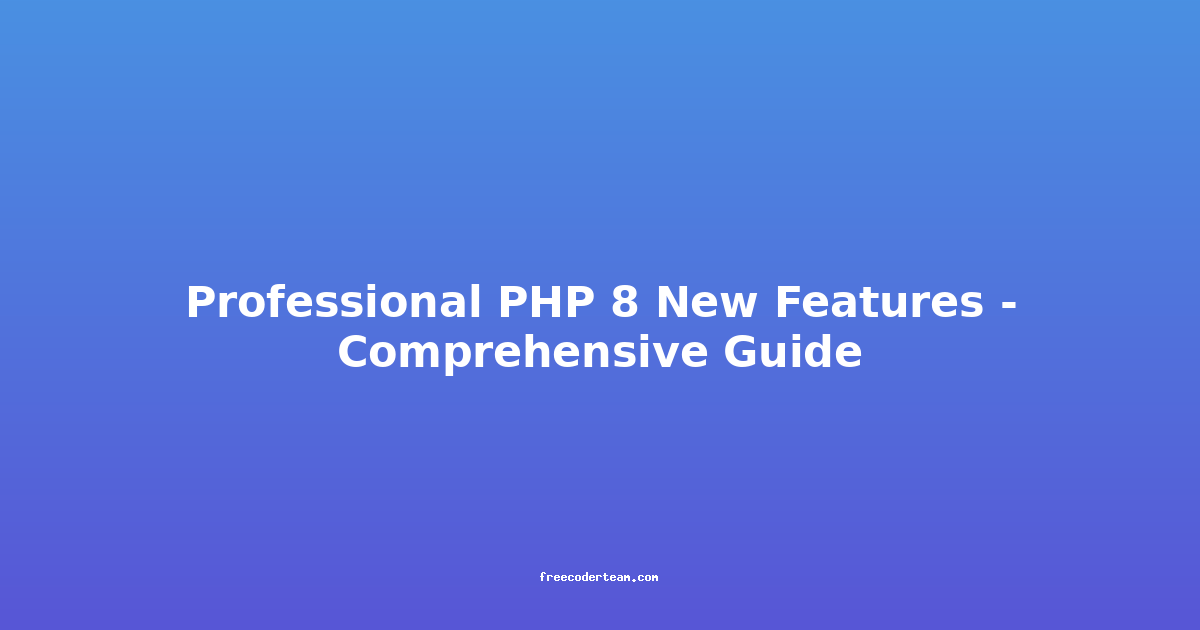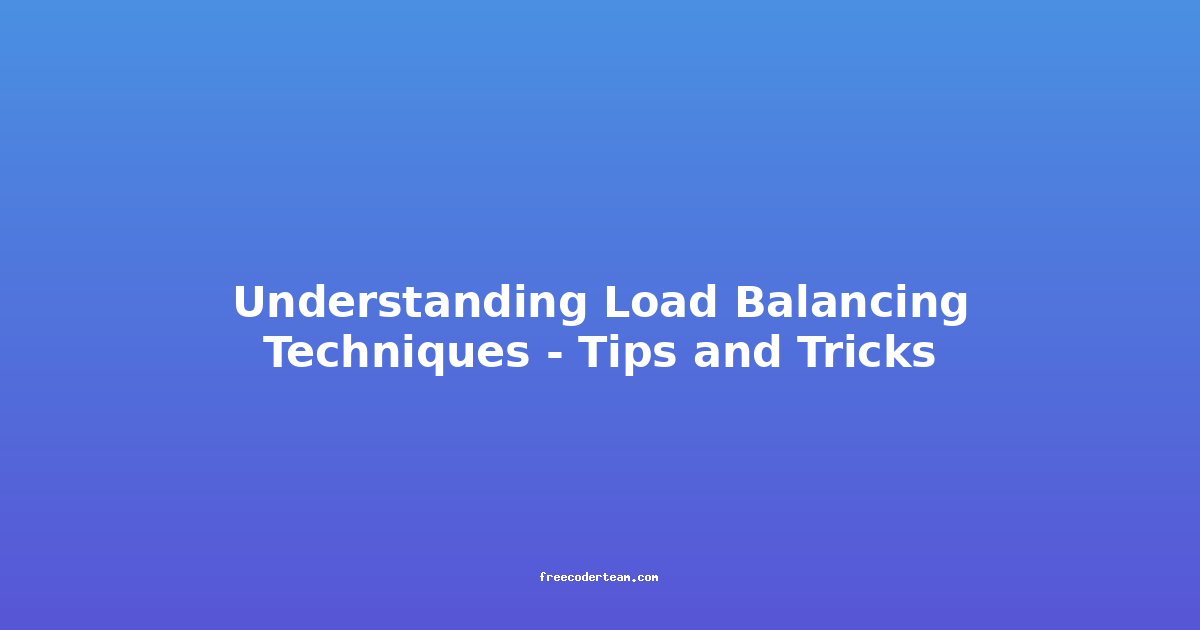GraphQL API Development From Scratch: A Comprehensive Guide
GraphQL has revolutionized the way APIs are designed and consumed, offering a flexible and efficient alternative to traditional RESTful APIs. If you're new to GraphQL or looking to build an API from scratch, this guide will walk you through the process step by step, with practical examples, best practices, and actionable insights.
Table of Contents
- Introduction to GraphQL
- Setting Up Your Development Environment
- Building a GraphQL Schema
- Resolvers: Bridging the Gap Between Schema and Data
- Implementing a GraphQL Server
- Testing and Debugging Your API
- Best Practices for GraphQL API Development
- Conclusion
Introduction to GraphQL
GraphQL is a query language for APIs, designed to provide a more flexible and efficient way for clients to request exactly the data they need. Unlike REST, where endpoints are rigid and return fixed data structures, GraphQL allows clients to define the exact structure of the data they want to retrieve. This results in fewer network requests, reduced data overfetching, and better performance.
Key Features of GraphQL
- Client-Side Control: Clients define the structure of the data they want to fetch.
- Single Endpoint: All requests are made to a single
/graphqlendpoint. - Strongly Typed Schema: GraphQL uses a type system to define the shape of the data.
- Introspection: Clients can query the schema at runtime to understand what data is available.
GraphQL is widely used by companies like Facebook, GitHub, and Apollo, making it a powerful tool for modern API development.
Setting Up Your Development Environment
To get started with GraphQL, you'll need to set up your development environment. Below are the tools and libraries you'll use:
Tools and Libraries
- Node.js: The runtime environment for building the server.
- GraphQL Server: Libraries like
Apollo ServerorExpress-GraphQLto implement the GraphQL server. - TypeScript (Optional): For type safety and better code maintainability.
- GraphQL Playground: An interactive tool for testing GraphQL queries.
Installation
-
Install Node.js: Ensure you have Node.js installed on your machine. You can download it from nodejs.org.
-
Initialize a Node Project:
mkdir graphql-api cd graphql-api npm init -y -
Install Apollo Server: Apollo Server is a popular library for building GraphQL servers. Install it using npm:
npm install apollo-server-express express -
Optional: Install GraphQL Playground: GraphQL Playground is a development tool for testing GraphQL queries:
npm install graphql-playground-middleware-express
Building a GraphQL Schema
The first step in building a GraphQL API is defining the schema. The schema is the contract between the server and the client, describing the available queries, mutations, and types.
Defining Types
Let's create a simple schema for a blog application. We'll define two types: Post and Author.
type Post {
id: ID!
title: String!
content: String!
author: Author!
}
type Author {
id: ID!
name: String!
email: String!
}
Queries
Next, we define the queries that clients can use to fetch data. For now, let's allow clients to fetch all posts and a single post by its ID.
type Query {
posts: [Post!]!
post(id: ID!): Post
}
Resolvers
Resolvers are functions that define how to fetch the data for each field in the schema. We'll implement these later, but let's start by defining the schema structure.
Complete Schema
Here's the complete schema for our blog application:
type Post {
id: ID!
title: String!
content: String!
author: Author!
}
type Author {
id: ID!
name: String!
email: String!
}
type Query {
posts: [Post!]!
post(id: ID!): Post
}
You can define this schema in a separate file, such as schema.graphql.
Resolvers: Bridging the Gap Between Schema and Data
Resolvers are the functions that fetch the actual data for each field in the schema. They act as the "backbone" of your GraphQL API, connecting the schema to your data sources.
Resolver Structure
Resolvers are typically organized into an object where keys match the field names in your schema. For example, for the Query type, you might have:
const resolvers = {
Query: {
posts: () => {
// Logic to fetch all posts
},
post: (_, { id }) => {
// Logic to fetch a single post by ID
},
},
Post: {
author: (post) => {
// Logic to fetch the author of a post
},
},
};
Example Resolver Implementation
Let's implement the resolvers for our blog schema. For simplicity, we'll use in-memory data.
const posts = [
{
id: "1",
title: "GraphQL Basics",
content: "GraphQL is a query language for APIs...",
author: {
id: "1",
name: "John Doe",
email: "john.doe@example.com",
},
},
{
id: "2",
title: "Building a GraphQL API",
content: "Learn how to build a GraphQL API from scratch...",
author: {
id: "2",
name: "Jane Smith",
email: "jane.smith@example.com",
},
},
];
const resolvers = {
Query: {
posts: () => posts,
post: (_, { id }) => posts.find((post) => post.id === id),
},
Post: {
author: (post) => post.author,
},
};
In this example:
postsreturns all posts.postfetches a single post by its ID.authorresolves the author field for a post.
Implementing a GraphQL Server
Now that we have the schema and resolvers, let's set up a GraphQL server using Apollo Server.
Step 1: Install Dependencies
Ensure you have apollo-server-express and express installed:
npm install apollo-server-express express
Step 2: Create the Server
Create a server.js file and set up the server:
const { ApolloServer } = require("apollo-server-express");
const express = require("express");
const { typeDefs, resolvers } = require("./schema");
const app = express();
const server = new ApolloServer({
typeDefs,
resolvers,
});
server.applyMiddleware({ app });
app.listen({ port: 4000 }, () =>
console.log(`GraphQL Server is running at http://localhost:4000${server.graphqlPath}`)
);
Step 3: Start the Server
Run the server using:
node server.js
Your GraphQL server will now be running on http://localhost:4000/graphql.
Using GraphQL Playground
To test your API, you can use GraphQL Playground. Install it as a middleware:
npm install graphql-playground-middleware-express
Update your server.js to include Playground:
const { graphqlPlaygroundExpress } = require("graphql-playground-middleware-express");
app.use("/playground", graphqlPlaygroundExpress({ endpoint: "/graphql" }));
Now, you can access the Playground at http://localhost:4000/playground.
Testing and Debugging Your API
Testing your GraphQL API is crucial to ensure it behaves as expected. You can use tools like GraphQL Playground or libraries like @apollo/client for testing.
Testing with GraphQL Playground
- Open
http://localhost:4000/playground. - Write a query to fetch all posts:
query {
posts {
id
title
content
author {
name
email
}
}
}
- Execute the query and verify the response.
Testing with a GraphQL Client
You can also test your API programmatically using a GraphQL client like @apollo/client.
const { ApolloClient, InMemoryCache, gql } = require("@apollo/client");
const client = new ApolloClient({
uri: "http://localhost:4000/graphql",
cache: new InMemoryCache(),
});
const query = gql`
query {
posts {
id
title
content
author {
name
email
}
}
}
`;
client
.query({ query })
.then((result) => {
console.log(result.data);
})
.catch((error) => {
console.error(error);
});
Best Practices for GraphQL API Development
1. Use Input Types for Mutations
For mutations, define input types to make your schema more readable and maintainable.
input CreatePostInput {
title: String!
content: String!
authorId: ID!
}
type Mutation {
createPost(input: CreatePostInput!): Post
}
2. Leverage Interfaces and Unions
Use interfaces and unions to handle polymorphic data structures. For example:
interface Node {
id: ID!
}
type Post implements Node {
id: ID!
title: String!
}
type Author implements Node {
id: ID!
name: String!
}
union SearchResult = Post | Author
3. Implement Pagination
GraphQL doesn't include built-in pagination, so you'll need to implement it yourself. Use cursors or offsets to handle large datasets efficiently.
4. Use Validation and Directives
GraphQL allows you to define custom directives and validation rules to enforce business logic and data integrity.
5. Keep Your Schema Documented
Use GraphQL's built-in documentation features to make your schema self-explanatory. Tools like GraphQL Playground will display this documentation automatically.
Conclusion
Building a GraphQL API from scratch is a rewarding and educational experience. By following the steps outlined in this guide, you've learned how to:
- Define a GraphQL schema.
- Implement resolvers to fetch data.
- Set up a GraphQL server using Apollo Server.
- Test and debug your API using GraphQL Playground.
GraphQL is a powerful tool for building flexible and efficient APIs. By adhering to best practices and continuously refining your schema, you can create APIs that are both developer-friendly and performant.
If you're interested in exploring more advanced topics, such as authentication, caching, or integrating with databases, there are plenty of resources available. Happy coding! 😊
Resources
Feel free to reach out if you have any questions or need further assistance!




